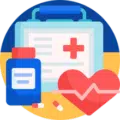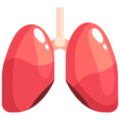Author(s)
Justin Bachman, PharmD
Abby Frye, PharmD, BCACP
Dawn Fuke, PharmD, BCPS
Reviewed By
Kristi Kelley, PharmD, BCACP, BCPS
Katie Kiser, PharmD, BCACP
Lewis NJW, Batra P, Misiolek BA, et al. Transgender/gender nonconforming adults’ worries and coping action related to discrimination: Relevance to pharmacist care. Am J Health-Syst Pharm. 2019; 76:512-20.
The Problem:
The transgender/gender nonconforming (TGNC) community faces a variety of challenges including access to healthcare, societal stigma, and discrimination. As a profession, pharmacy is well-positioned to reduce and address the barriers to care faced by TGNC individuals and to provide them with positive experiences within the healthcare system. However, formal instruction about this patient population’s social and medical needs is lacking in most pharmacy school curricula.1,2 Although medications can play an important role in the treatment plan for transgender individuals, there is little published information regarding the role of pharmacists in the care of TGNC individuals nor the experiences or perceptions of pharmacists in the TGNC community.3
What’s Known:
Key Terminology
|
Transgender |
A person whose gender identity differs from the sex that was assigned at birth. May be abbreviated to trans. A transgender man is someone with a male gender identity and a female birth assigned sex; a transgender woman is someone with a female gender identity and a male birth assigned sex. |
|
Gender non-conforming |
A person whose gender identity differs from that which was assigned at birth, but may be more complex, fluid, multifaceted, or otherwise less clearly defined than a transgender person. |
|
Cisgender |
A non-transgender person may be referred to as cisgender (cis=same side in Latin). |
|
Transsexual |
A clinical term that historically was used to describe those transgender people who sought medical intervention (hormones, surgery) for gender affirmation. |
Table excerpted from: http://www.transhealth.ucsf.edu/tcoe?page=guidelines-terminology)
TGNC individuals are less likely than non-transgender individuals to have health insurance and more vulnerable to discrimination. A history of discrimination or other negative experience, or the fear of these experiences, can lead individuals to delay or avoid seeking care. Discrimination is also associated with poor health. The rates of depression, anxiety, and suicide attempts are significantly higher in the TGNC population when compared to the general United States population. TGNC individuals are also at higher risk for HIV and substance abuse disorders.2
|
|
Lifetime Depression |
Suicide attempts |
Anxiety |
|
General US Population |
7.6% |
4.6% |
18.1% |
|
TGNC individuals |
Up to 62% |
40% |
26-47.5% |
What’s New:
A recently published study sought to evaluate and describe TGNC adults’ worry about discrimination and perceptions of and experiences with pharmacists with regard to their competency and provision of gender-affirming care.2 The perceptions of pharmacists were compared to the perceptions of primary care providers (PCPs) and transgender specialists.
US residents, 18 years of age or older who self-identified as TGNC were eligible for inclusion. The survey used validated scales and included a variety of question types. The survey was available online for 6 months, June thru November 2016. A TGNC advocacy organization and other community organizations notified their members about the survey and participants were encouraged to ask others to complete the survey.
A total of 325 survey responses were received, with just 9 responses excluded based on the respondent’s age, place of residence, or the fact that most responses were left blank. Survey respondents ranged in age from 18-67 years with 81% of respondents < 45 years of age. Most were white, college educated, and had low household incomes. Responses were received from all geographic regions of the US; however, nearly half were from the Midwest and a majority (87%) were from urban or suburban areas. Participants were asked to identify their gender in a free text format, and 40 unique definitions of gender identity were reported highlighting the complexity of the TGNC patient population.
Experience with pharmacy services was very common among respondents (86.2%), but nearly half identified that interactions with pharmacists are associated with either some or a lot of worry about discrimination. This level of worry was comparable to PCPs but much higher than transgender specialists. Over half of respondents thought pharmacists had no or very little competency in the provision of gender-affirming care. Not surprisingly, transgender specialists were viewed much more confidently.
|
|
Discrimination Worry |
Perceived Competency |
|
“Some” or “A lot” |
“Not at all” or “Very Little” |
|
|
Pharmacists |
41.6% |
52.5% |
|
PCPs |
54.6% |
40.4% |
|
Transgender specialists |
11.8% |
1.5% |
TGNC individuals commonly use a variety of strategies to cope with healthcare discrimination. Nearly three-quarters of respondents (74.6%) reported choosing providers known to be trans- or gender-affirming and another 66.4% reported that they had sought the advice of gender-affirming groups or associations. These were the 2 most helpful coping actions identified with most or nearly all of those who tried these actions noting them to be helpful (92.1% and 78.4%, respectively). Other coping actions, such as obtaining prescriptions from acquaintances or online pharmacies that do not require a prescription, or using natural products to avoid asking for a prescription were not found to be helpful (32.4-71.7% rated these “not at all” helpful).
Our Critical Appraisal:
The survey questions were developed using a community-led participatory approach, which is recommended when researching marginalized, minority groups. Use of validated scales and including members of the target community ensures the relatability and appropriateness of the survey items.4 The use of a snowball recruitment method and an online survey platform are two additional strengths that increase the visibility and accessibility of the survey.4
The characteristics of the survey population may affect the external validity of the results. The relative lack of racial diversity, older adults, and individuals from rural areas, as well as the exclusion of adolescents, may limit the applicability of the results to the broader TGNC population. Additionally, participants were allowed to skip questions and/or exit the survey at any point, which increases the potential for nonresponse errors and smaller sample sizes for some of the items.5
That said, the survey results suggest that PCPs and pharmacists alike have plenty of room for improvement with regard to how we care for the TGNC community. As pharmacists, many of us pride ourselves on being a trusted and accessible member of the healthcare team who can help reduce barriers to care. However, discrimination worry and perceived lack of competence can negatively impact this experience. To help change this perception and to better prepare future pharmacists, TGNC health education should be integrated into pharmacy schools and residency programs. In 2014, the Association of Medical Colleges published recommendations for training future physicians to care for TGNC individuals, and in 2015, the American College of Physicians released a position paper advocating for inclusion of lesbian, gay, bisexual, and transgender (LGBT) health issues in the curricula of medical schools, residency programs, and continuing medical education programs.6,7 A guideline regarding the inclusion of TGNC-specific education does not yet exist for pharmacy schools, and most schools do not include it in their curricula.1,8 However, there are some published examples that could serve as models for other programs.9,10
Education is a key part to achieving competency and it is vital that pharmacists and student pharmacists improve their knowledge on how to effectively and appropriately interact with this patient population. Communication is essential to establish trust and understanding. However, even if an individual pharmacist is personally competent in providing gender-affirming care, unless the TGNC individual recognizes that pharmacist as gender-affirming, their worry about discrimination may lead them to avoid seeking pharmacy services or disclosing their authentic gender.
There are several ways to implementing gender-affirming care to TGNC individuals, such as posting gender-affirming signs in your workplace and taking the necessary steps to ensure each individual’s preferred name and pronouns are used by staff. In addition, it’s important to ensure that each TGNC individual’s specific healthcare and psychosocial needs are adequately addressed. This may include assisting with healthcare affordability, connecting the patient with needed social services or community support, or initiating a discussion about mental health.
There is a growing list of resources available which address both the clinical and cultural aspects of the TGNC population. Several professional organizations have released guidelines on the management of TGNC patients that also shed light on the epidemiologic considerations and barriers the TGNC community faces in healthcare.11-13 Other organizations offer free tools that provide guidance on how to develop a welcoming environment, effectively and respectfully communicate, and address specific health-related concerns in the TGNC community.
|
Guidelines and Resources |
|
|
|
|
|
|
|
|
|
|
|
|
|
|
|
|
|
Bottom Line:
Healthcare, in general, and pharmacists specifically have a long way to go to improve perceptions of competence within the TGNC community. Educating oneself using freely available resources is an excellent place to start. The best way to improve relations between the TGNC community and healthcare professionals is honest and open conversations.
The Key Points
- Many transgender and gender non-conforming (TGNC) persons avoid or delay health care due to worries about stigma and discrimination.
- In a recent study, most TGNC persons perceived that pharmacists had very little or no competency delivering gender-affirming care.
- Gender-affirming care begins with understanding the health and social issues people in the TGNC community face, using each person’s preferred name and pronoun, and having open conversations.
FINAL NOTE: This program will be available for recertification credit through the American Pharmacists Association (APhA) Ambulatory Care Review and Recertification Program. To learn more, visit https://www.pharmacist.com/ambulatory-care-review-and-recertification-activities.
- Wilkening GL. The current status of transgender health education in doctor of pharmacy curricula in North America. Ment Health Clin. 2017;7(4):168-171.
- Lewis NJW, Batra P, Misiolek BA, et al. Transgender/gender nonconforming adults’ worries and coping action related to discrimination: Relevance to pharmacist care. Am J Health-Syst Pharm. 2019;76:512-20.
- Newsome C, Colip L, Sharon N, Conklin J. Incorporating a pharmacist into an interprofessional team providing transgender care under a medical home model. American Journal of Health-System Pharmacy. 2017;74(3):135-9.
- Kelley K, Clark B, Brown V, Sitzia J. Good Practice in the Conduct and Reporting of Survey Research. Int J Qual Health Care. 2003;15:261-6.
- Ponto J. Understanding and Evaluating Survey Research. J Adv Pract Oncol. 2015;6:168-71.
- Association of American Medical Colleges. Integrating curricular and institutional climate changes to improve health care for individuals who are LGBT, gender nonconforming or born with DSD. 2014. Available on-line at: https://www.aamc.org/download/414172/data/lgbt.pdf
- Daniel H, Butkus R. Lesbian, gay, bisexual, and transgender health disparities: executive summary of a policy position paper from the American college of physicians. Ann Intern Med. 2015;163:135-7.
- Redfern J, Jann M. The Evolving Role of Pharmacists in Transgender Health Care. Transgender Health. 2019;4(1):118-30.
- Newsome C, Chen LW, Conklin, J. Addition of care for transgender-related patient care into doctorate of pharmacy curriculum: implementation and preliminary evaluation. Pharmacy. 2018; 6(4):E107.
- Jann MW, Penzak S, White AW, Tatachar A. An elective course in lesbian, gay, bisexual, and transgender (LGBT) health and practice issues. Am J Pharm Educ. 2019. E-View. Available on-line at: https://www.ajpe.org/doi/abs/10.5688/ajpe6967
- UCSF Transgender Care, Department of Family and Community Medicine, University of California San Francisco. Guidelines for the Primary and Gender-Affirming Care of Transgender and Gender Nonbinary People; 2nd edition. Deutsch MB, ed. June 2016. Available at transcare.ucsf.edu/guidelines.
- Hembree W, Cohen-Kettenis P, Gooren L, et al. Endocrine Treatment of Gender-Dysphoric/Gender-Incongruent Persons: An Endocrine Society Clinical Practice Guideline. J Clin Endocrinol Metab. 2017;102(11):3869-3903.
- Coleman E, Bockting W, Botzer M, et al. Standards of Care for the Health of Transsexual, Transgender, and Gender-Nonconforming People, Version 7. Int J Transgenderism. 2012;13(4):165-232.






 iForumRx.org is a web-based community of practice designed to inform ambulatory care pharmacy specialists, pharmacy residents, and student pharmacists about high-quality, practice-changing evidence.
iForumRx.org is a web-based community of practice designed to inform ambulatory care pharmacy specialists, pharmacy residents, and student pharmacists about high-quality, practice-changing evidence.